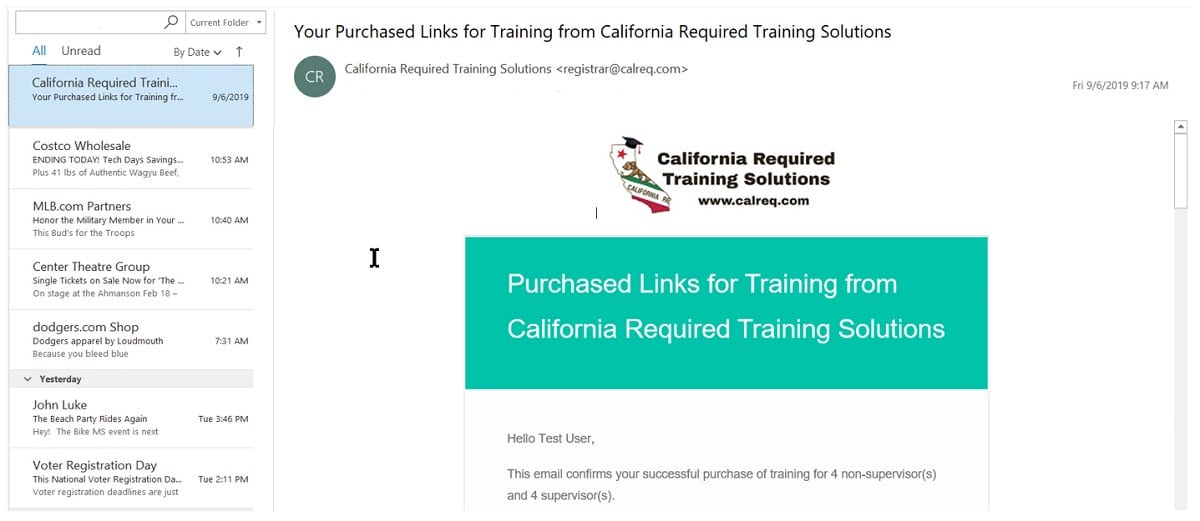Costly Misconceptions of Training: Three Myths that are Blowing your Training Budget
Leslie Paton, MA, MBA
Costly misconceptions of SHPT (sexual harassment prevention training): three myths that are blowing your budget.
This article originally appeared on our sister site Illinois Required Training Solutions in November 2020.

Benjamin Franklin once said, “The only thing more expensive than education is ignorance.” And later, Henry Ford lamented: “The only thing worse than training your employees and having them leave, is not training them and having them stay.” Which implies that the only thing more costly than training is not training at all.
But in fact, more expensive than both of these is training badly. Purchasers of company-wide training can unwittingly use bad assumptions when selecting courses and delivery models that can be very costly to their organizations, both in terms of the training budget and the resulting impact on the workforce.
Costly Misconception Number One:
ALL in-person training is better than E-learning, and webinars are better than self-delivered modules.
Like any generalization about work, there are some circumstances when this assumption can be true. Most of us have experienced how an adept and engaged instructor can lighten the dullest content and captivate the most resistant audience. We have also seen, however, that these superstars of classroom instruction are few and far between. Few purchasers of corporate training have the time to sit through an in-person class to sample the experience. Especially with required training, or training with especially dense/technical content, do you dare gamble on an unknown trainer? E-learning, on the other hand, is available on-demand and easily sampled. When cost is figured in, oftentimes a student could go multiple times through different e-Learning alternatives for much less than the cost of one in-classroom or webinar sitting.

Recently I was in the awkward position of explaining to a customer why a Zoom training offered by her local industry association probably didn’t meet the State’s requirement for sexual harassment prevention training. California has extra requirements for compliant e-Learning, including the mandate that the training be interactive and individualized, and extra documentation requirements proving the interactive elements occurred.
Post-COVID, the association appears to have simply moved an in-person class format onto Zoom without adjusting for the fact that Zoom training is no longer in-person. By not including quizzes and test bank questions tailored to the student’s input experience, or maintaining written question/answer logs, an offering that was trying to be helpful almost definitely didn’t met the state requirement for compliant training. Therefore in addition to wasting participants’ time and money, the companies and their employees would not be compliant.
Reality:
E-learning can be more effective, and cheaper, than in-person training and webinars.

Misconception Number Two:
All training conducted in a group is superior to individual training.
As with the first costly misconception of training, there are in fact certain instances when this assumption can be true. For example, students in a group can learn from the answers to each other’s questions, especially if the questions raised were ones they didn’t think of or were too shy to ask. However, all too often one or two exuberant talkers hijack group question time and take the discussion down fruitless avenues. Worse, if the topic is delicate or sensitive, question time can result in individuals unhelpfully “oversharing” with their teammates. In the example of sexual harassment prevention in the workplace, this topic is directly informed by individuals’ assumptions about gender roles, views on appropriate behavior, tolerance awareness and the perceptions of others. Workers discussing sexual harassment in a group setting can end up sharing and learning biases and opinions about each other that teammates may wish they hadn’t heard explicitly expressed. Since the team still has to work together successfully after the training concludes, separating workgroups into individual training sessions allows a learning experience paced to the individual learner that additionally protects everyone’s mutually favorable images.
Costly Misconception of Training Number Two may be buttressed by the fact that tracking employees through individual training is perceived as more difficult than attending a “one and done” event. Managers may subconsciously prefer using peer pressure to get everyone into a group training rather than scanning a report to see who has completed their requirements and following up with the outliers only. But any single event is inevitably a victim of scheduling — there’s a reason that “Training Day” is the name of a crime thriller film. Training Day will turn out to be the one day that one employee is sick, some important customer has an emergency, and/or Zoom chooses to Plunge. Only one new hire after the session concludes means that an expensive repeat session is needed. That’s just not very easy or convenient.
Modern individualized e-Learning, on the other hand, takes every speed bump in stride: scheduling to employee availability, scaling incrementally to a changing workforce, and providing simple and easy reports and real-time dashboards to track employee compliance.
Reality:
Training employees individually has benefits – exploit these to your company’s advantage.

Costly Misconception Number Three:
Videos are always better.
We get it. We love movie night too. The comfy chairs, the darkened room, whispering to friends, popcorn. Most managers believe that employees would rather watch a video than do something that feels like a meeting, study, or work. So why not conduct all training in video format?
But video isn’t perfect for all situations. We’ve all seen the video version of a painful skit: “Hi, I’m Steve.” “And I’m Janet!” And I’m looking for the door already. There’s nothing like an awkwardly-acted scenario to give people the clue that the hour to follow will be both painful and dull. In fact, most people who roll their eyes at the concept of sexual harassment prevention training developed their bad impression from video training. There’s a reason that the book is always better than the movie – nobody ever imagines bad acting.
In addition, we can miss the ways even well-acted videos can be disturbing. Again using the example of sexual harassment prevention training, early courses took the approach that sexual harassment was not happening in most workplaces. Video directors put lots of emphasis into especially lurid depictions, as if their audience needed to see it on screen to recognize and understand what the voice-over was talking about. Nowadays, our workforce is much more knowledgeable and sophisticated as to how subtle and pervasive this workplace phenomenon truly is. The harasser figure straight out of Central Casting makes for especially creepy visuals, but isn’t representative or necessary for teaching and learning.
Indeed, with the increased participation of new groups and generations within the workforce, we’ve also come to recognize that we have a fair number of domestic violence and stalking survivors in our workplace. These folks do not wear this status on their sleeves, so we might not be aware of who they are. But sit next to people in a group training and watch who’s white-knuckling even at still images. We human beings are empathetic by nature, which means we can imagine what others are thinking and feeling. These high-impact depictions of cringe-worthy if not threatening behavior can be highly disturbing, even to those you would not have thought of as “delicate” employees.
Practically, video is still a challenge in low-bandwidth environments. It can refuse to load, freeze, crash, or all three. There’s nothing worse than having a long video stream restart from the beginning – they could have used this on the prisoners at Guantanamo. So if you’re trying to make training convenient for a field workforce, be merciful and skip the video. Your employees will thank you, and your budget will as well.
Reality:
First, do no harm. Save video learning for in-office sales and technical applications, or positive behavioral examples that can stand the test of time.
The Bottom Line:
By questioning these three costly misconceptions of training, you can increase the effectiveness of your training courses, have more positive and fewer negative impacts on your workforce, and stretch your budgets even further than ever before.

We make it easy.
California Required Training Solutions offers a fast, simple online training solution to California's sexual harassment prevention training mandate. www.calreq.com features fully compliant online courses that are self-paced, timed, bookmarked, and can be taken from a host of mobile devices anywhere the internet is available. Course students can stop/start as many times as necessary without losing their place or progress, and retest until they pass. Upon finishing the course, students can immediately download and print/email a certificate of completion.
Employers find California Required Training Solutions' online retail shopping cart system easy to use and course licensing easy to administer post-purchase. Upon adding the desired number of supervisor or non-supervisor, "for yourself" or "for staff" courses in English or Spanish to the cart, purchase is completed using a credit card.
Immediately, the purchaser is placed into any "for yourself" courses while simultaneously emailed a dedicated set of unique links for the "for staff" courses. These links can be forwarded individually to each employee. Thereafter, the purchaser can log in to the site's dashboard to generate a real-time report showing which link has been used by which employee, whether or not the employee has begun or finished the training, and can download a copy of each completed student's certificate.
Finally, all our generated certificates can be validated via our certificate number lookup tool to ensure that they are genuine.




Recent Comments